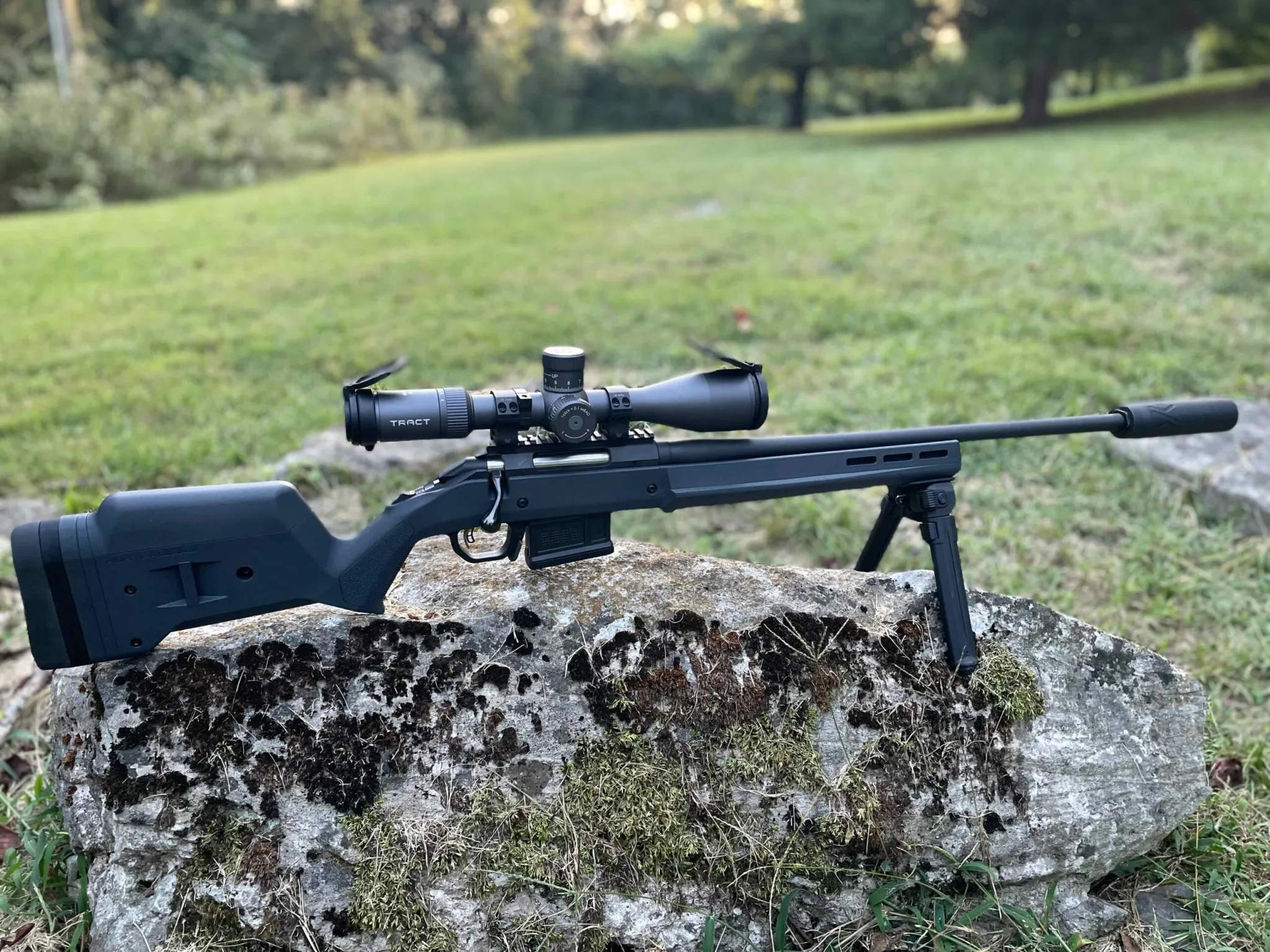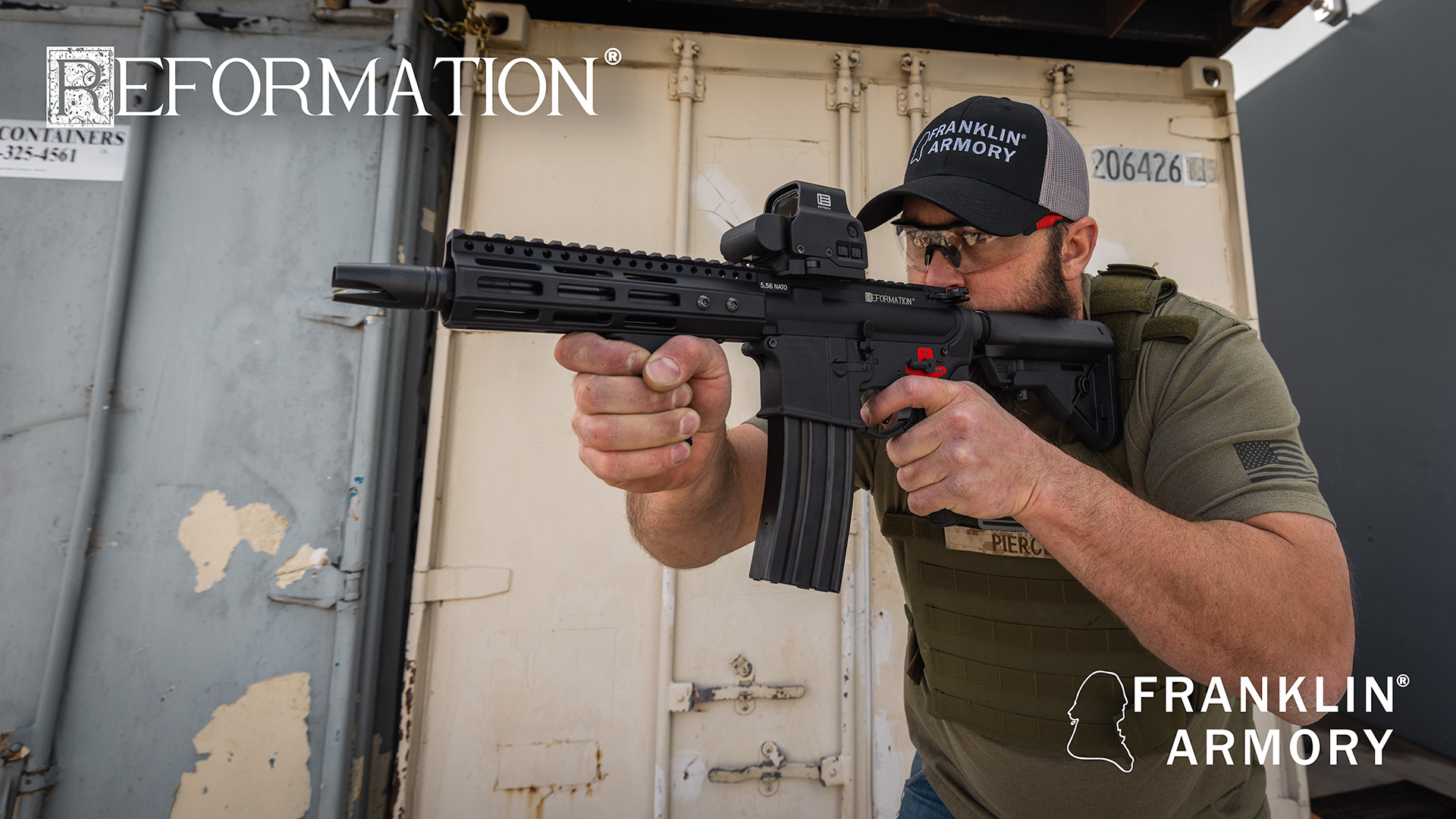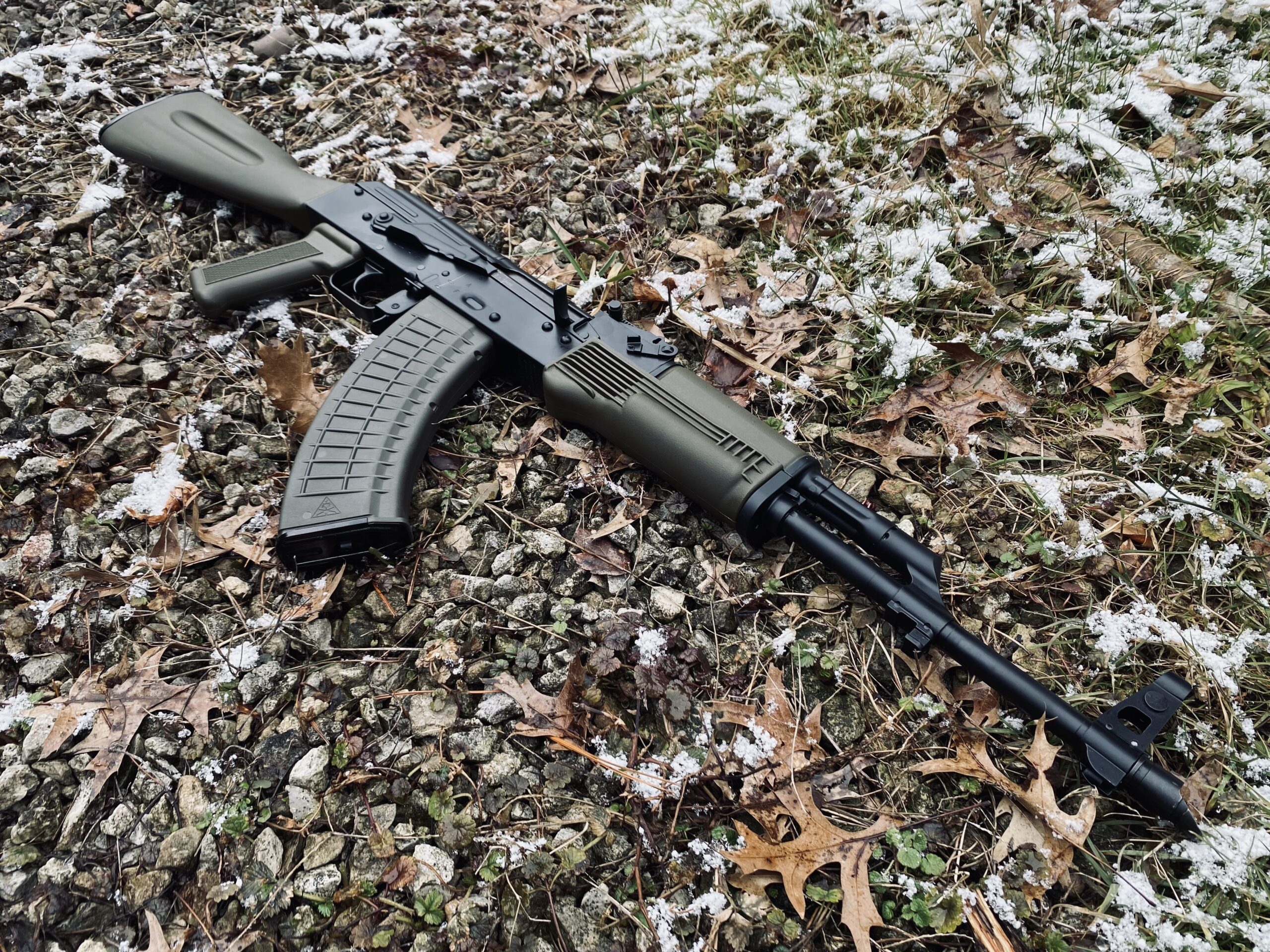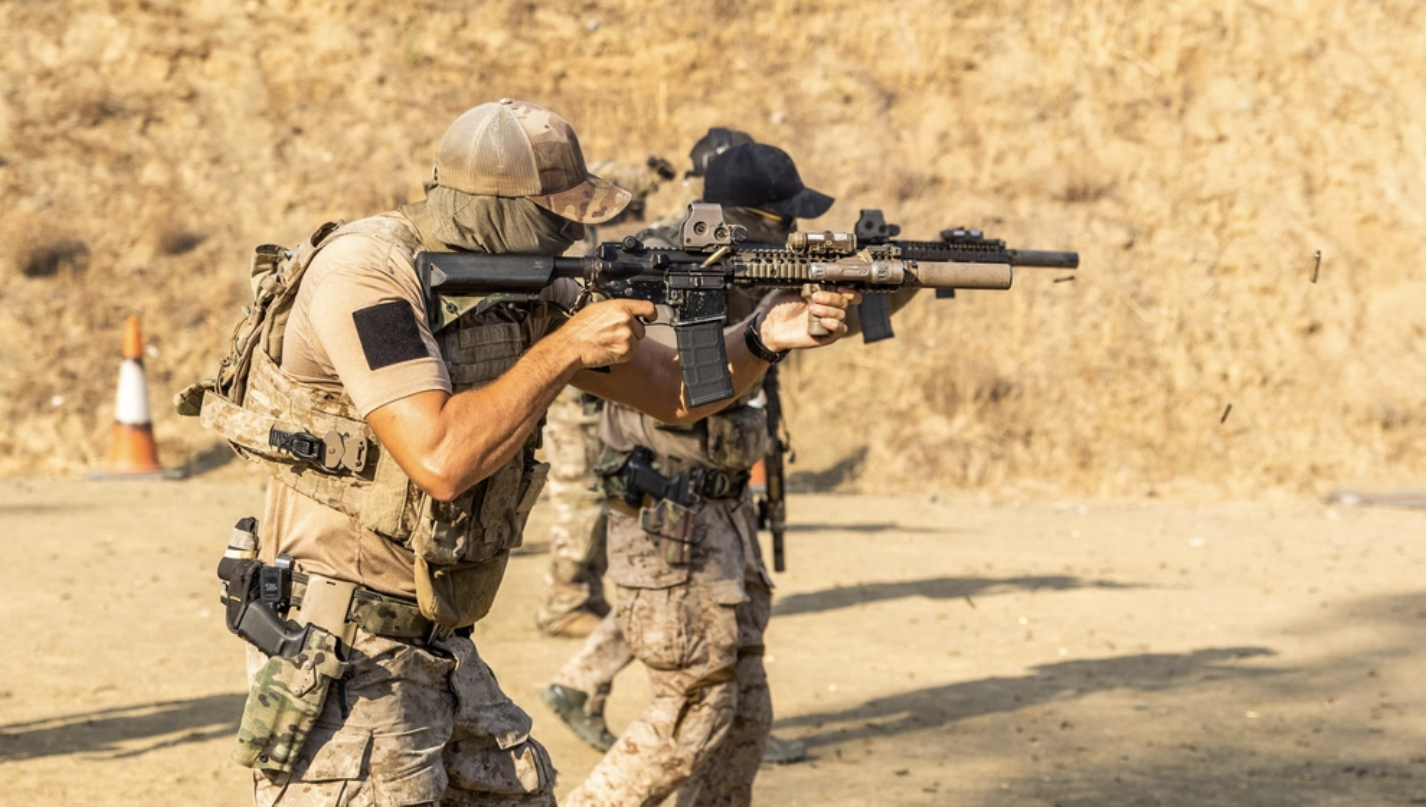Hunting laws can be tricky, and if you’re wondering whether you can legally hunt with a thermal scope, the answer depends on where and what you’re hunting.
In the United States, thermal optics are legal in many states for hunting predators like coyotes, feral hogs, and varmints but are often restricted for big game like deer, elk, and turkey, especially at night.
Each state has different laws, and in some cases, you may need a special permit to use thermal imaging for hunting.
Example:
- Texas: Fully legal for hogs, coyotes, and even deer.
- California: Completely banned for big game hunting.
- Florida: Allowed for hogs and coyotes but with light restrictions.
Bottom Line? Check your state’s hunting regulations before heading out with a thermal scope.
State-by-State Breakdown of Thermal Scope Hunting Laws
⚠ Disclaimer: This is not legal advice. Hunting laws change frequently, and you must check with your state’s wildlife agency to confirm the latest regulations before using a thermal scope for hunting.
States Where Thermal Scope Hunting Is Legal
- Alabama – Legal for hogs & coyotes (permit required)
- Arkansas – Legal for feral hogs & raccoons with dogs
- Connecticut – Legal for raccoons & possums (seasonal)
- Delaware – Legal if no infrared/light is emitted
- Florida – Legal for hogs & coyotes (some restrictions)
- Georgia – Fully legal, no restrictions
- Idaho – Legal but must not emit light
- Illinois – Legal for small game (coyotes, foxes, raccoons)
- Indiana – Legal with continuously burning visible light
- Iowa – Legal if no visible light is emitted
- Kansas – Legal with a night vision permit (seasonal coyote hunting)
- Kentucky – Legal for coyotes with shotguns (seasonal)
- Louisiana – Legal for hogs & coyotes
- Maine – Legal for raccoons & coyotes (seasonal, with dogs)
- Maryland – Legal but must not emit visible light
- Massachusetts – Legal with no visible light emissions
- Michigan – Legal for nighttime small game hunting
- Minnesota – Legal for foxes & coyotes (seasonal)
- Mississippi – Legal on private land for predators
- Missouri – Legal for coyotes (Feb 1 – March 31)
- Montana – Legal for coyotes & non-regulated species
- Nebraska – Legal for furbearers & coyotes
- New Hampshire – Fully legal, no restrictions
- New Jersey – Fully legal, no restrictions
- New York – Legal for certain small game at night
- North Carolina – Fully legal, no restrictions
- North Dakota – Legal for coyotes & foxes
- Ohio – Legal for coyotes, raccoons, skunks, etc.
- Oklahoma – Legal for hogs & coyotes
- Pennsylvania – Fully legal, no restrictions
- Rhode Island – Legal but only for raccoons at night
- South Carolina – Legal for hogs, coyotes, armadillos
- South Dakota – Legal but only on private property
- Tennessee – Legal but restricted from sunset to sunrise
- Texas – Fully legal, no restrictions
- Utah – Fully legal
- Vermont – Legal, does not emit IR light
- Virginia – Legal for certain small game at night
- Washington – Legal for coyotes outside deer/elk season
- West Virginia – Legal for coyote, fox, raccoon, skunk, opossum
- Wisconsin – Legal for small game (coyotes, raccoons)
- Wyoming – Legal for predators on public land (with permission)
States Where Thermal Scope Hunting Is Illegal
- Alaska – Illegal
- Arizona – Illegal
- California – Illegal
- Colorado – Illegal
- Hawaii – Illegal
- Nevada – Illegal
- New Mexico – Illegal
- Oregon – Illegal
Pro Tip: Always check with your state’s wildlife agency before heading out with a thermal scope.
Thermal Scopes vs. Night Vision
Both thermal and night vision help hunters operate in low-light conditions, but thermal imaging has some distinct advantages.
- Thermal Scopes: Work in total darkness, detect heat, and cut through fog, smoke, and brush.
- Night Vision: Requires ambient light and doesn’t detect heat.
Thermal scopes are the ultimate edge when hunting at night or in rugged terrain, making them perfect for coyote and hog hunters.
For a deep dive into how they differ and their advantages and disadvantages, stay tuned for an upcoming article!
Why Armasight Thermal Weapon Sights?
If you’re serious about hunting with thermal, you need a scope that delivers reliable performance in the field. That’s where Armasight’s Contractor and Collector series comes in.
Key Advantages of Armasight Thermal Scopes
- Superior Detection Range – Spot predators hundreds of yards away
- Rugged Durability – Built for harsh weather & challenging terrain
- User-Friendly Controls – Intuitive operation for quick adjustments
- Extended Battery Life – Stay in the hunt longer
Final Thoughts: Can You Hunt With a Thermal Scope?
Yes, but know your state’s laws.
Get ready to dominate the night and become the ultimate predator! Explore Armasight Thermal Weapon Sights to get the edge in your next hunt.









I guess it depends on which pigs you are hunting.
😉
“Mississippi – Legal on private land for predators”
does that include the two leg variety?
😅
AGM RATTLERV2 Thermal Scope Riflescope > $769.99 on Amazon.
That is likely the 256 pixel version. That amount of resolution is fine for short-range engagements, probably to about 100 yards or so.
Probably good enough for dense woods or lots of occluded terrain (much of the Northeast) but for anything serious I would expect the cost to start at 1500 but compared to a decade ago that’s awesome for pricing.
SAFEupstateFML,
Excellent analysis and commentary.
Yes, what I posted is the 256 pixel version (256×192) with 19mm lens. Its got a detection range of 950 yards. And like others in the series uses a 12-micron high-sensitivity thermal sensor (the same sensor Armasight uses in the article mentioned Armasight Contractor and Collector series).
The AGM 25 mm lens version ($995.00 at Amazon) has a detection range of 1,800 yards. 3.5× – 28× magnification, 1×, 2×, 4×, 8× digital zoom.
There are others in the Rattler V2 series also, for example two introduced at 2024 shot show (along with the one above):
384 pixel versions – 384×288. Base Magnifications of 2X and 3X, and detection ranges of 1200 (25 mm lens version) and 1800 yards (35 mm lens version).
640 pixel versions – 640×512. Base Magnifications of 2X and 2.5X, and detection ranges of 1800 (35mm lens version) and 2600 yards (50 mm lens version).
AGM thermal scopes are available at Amazon or the AGM site or from other retailers > h ttps://www.amazon.com/stores/page/8F538D38-CA2B-43A5-A8AA-BE9751911D7C?ingress=2&visitId=184ca39a-13c6-45d5-8230-8863c14e33b2&store_ref=bl_ast_dp_brandLogo_sto&ref_=ast_bln
so, my point is there is good quality thermal available at lower cost compared to the Armasight.
Absolutely are we are just in a space of increasing capabilities and reducing costs as the technology matures (like computers from the early 90s to mid 00s) so specific models are tricky to pick as they hit capability half life faster than analog night vision and make identifying generally good models that lack undesirable quirks that show up over months to years of use difficult.
Given the massive invasion of hogs across this country and the immense damage they cause, especially in the south, west and along the Canadian border, thermal or night vision scope should be legal for hunting this usually nocturnal species everywhere. Permit fees should be reduced or eliminated.
Is it legal to ask me what I am hunting with? Not that I care. At some point we need to kill those that would take our God given rights away. That’s the whole point isn’t it?
Anything that brings a pig to its knees. The damn things are a scourge. A pox on the Spanish for releasing them in North America. As well as us for allowing the feral to escape.
A pox on the spanish.
David Hogg is an invasive species.
For reference the list above is incorrect for my state. (My state is more permissive than stated in the list.) Regardless, I am glad that the author is calling attention to this topic and the list shows that you can legally hunt with thermal imaging scopes in the majority of states. As the author stated, check the laws in your specific state.
Good enough for Predator good enough for me.
Delaware – Legal if no infrared/light is emitted
I am a noob on this topic. What is the issue with emitting light?
There is active infrared where a red spectrum light is needed. Red spectrum covers the red end of the visible light into actual infrared spectrum. Older IR was active and needed the light.
Also a lot of digital night vision (and analog gen 1 an 2 depending on distance and how dark) tend to use nir light just outside of what humans can see to light up the area to see better (or at all)
“Georgia – Fully legal, no restrictions”
Look for GA’s turkey population to plummet. A gift to wildlife traffickers.
What was stopping traffickers and poachers before? GA’s turkeys will be fine.
SC is actually legal for everything until one hour after sunset if you read the law carefully. “Night” is defined as one hour after sunset and light restrictions only apply at night.
@top secret “What was stopping traffickers and poachers before? GA’s turkeys will be fine.”
You don’t understand how easy thermal scopes make it to take turkeys and any other diurnal bird off the roost.
GA’s turkeys have been in decline in recent years, BTW.
Enhanced penalties for using such tech in wildlife crimes please.
The radar detector ban all over again. Does the spectrum (radio, light, etc.) belong to the public or doesn’t it?
Thermal/night-vision is LEGAL in Nevada for NON-GAME wildlife (e.g. coyote).
Sam Colt’s .45 made all men equal, but the infrared sniper scope made them all the same color.
You can get both in one scope now. Picture in a picture.
It’s not easy being green. It’s even worse being green in someone’s crosshairs.
In Idaho, you do not need a permit to hunt with any scope that relies on ambient light only, including thermal and night vision.
It is also legal to illuminate predators and unprotected wildlife with any sort of artificial light, be it visible or infrared, as long as you obtain the necessary permit.
I have a question: Was this an article or an infomercial?
Gun and gear reviews are usually reasonably neutral, but the Armasight plug was kinda shameless.